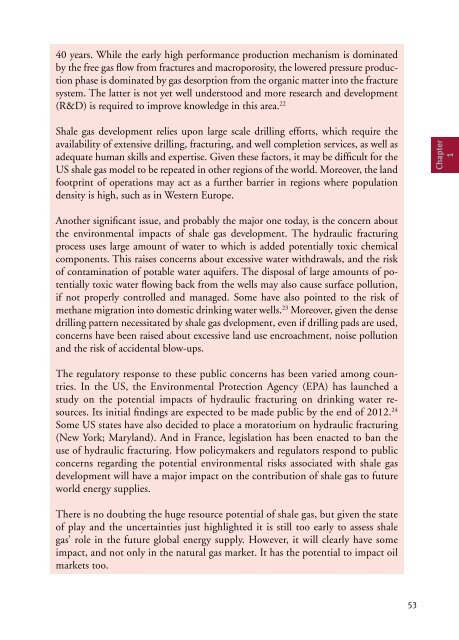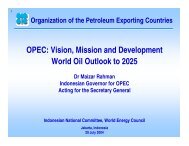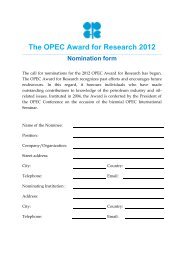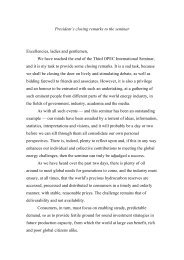Section One
Section One
Section One
Create successful ePaper yourself
Turn your PDF publications into a flip-book with our unique Google optimized e-Paper software.
40 years. While the early high performance production mechanism is dominated<br />
by the free gas flow from fractures and macroporosity, the lowered pressure production<br />
phase is dominated by gas desorption from the organic matter into the fracture<br />
system. The latter is not yet well understood and more research and development<br />
(R&D) is required to improve knowledge in this area. 22<br />
Shale gas development relies upon large scale drilling efforts, which require the<br />
availability of extensive drilling, fracturing, and well completion services, as well as<br />
adequate human skills and expertise. Given these factors, it may be difficult for the<br />
US shale gas model to be repeated in other regions of the world. Moreover, the land<br />
footprint of operations may act as a further barrier in regions where population<br />
density is high, such as in Western Europe.<br />
Another significant issue, and probably the major one today, is the concern about<br />
the environmental impacts of shale gas development. The hydraulic fracturing<br />
process uses large amount of water to which is added potentially toxic chemical<br />
components. This raises concerns about excessive water withdrawals, and the risk<br />
of contamination of potable water aquifers. The disposal of large amounts of potentially<br />
toxic water flowing back from the wells may also cause surface pollution,<br />
if not properly controlled and managed. Some have also pointed to the risk of<br />
methane migration into domestic drinking water wells. 23 Moreover, given the dense<br />
drilling pattern necessitated by shale gas dvelopment, even if drilling pads are used,<br />
concerns have been raised about excessive land use encroachment, noise pollution<br />
and the risk of accidental blow-ups.<br />
The regulatory response to these public concerns has been varied among countries.<br />
In the US, the Environmental Protection Agency (EPA) has launched a<br />
study on the potential impacts of hydraulic fracturing on drinking water resources.<br />
Its initial findings are expected to be made public by the end of 2012. 24<br />
Some US states have also decided to place a moratorium on hydraulic fracturing<br />
(New York; Maryland). And in France, legislation has been enacted to ban the<br />
use of hydraulic fracturing. How policymakers and regulators respond to public<br />
concerns regarding the potential environmental risks associated with shale gas<br />
development will have a major impact on the contribution of shale gas to future<br />
world energy supplies.<br />
There is no doubting the huge resource potential of shale gas, but given the state<br />
of play and the uncertainties just highlighted it is still too early to assess shale<br />
gas’ role in the future global energy supply. However, it will clearly have some<br />
impact, and not only in the natural gas market. It has the potential to impact oil<br />
markets too.<br />
53<br />
Chapter<br />
1
















